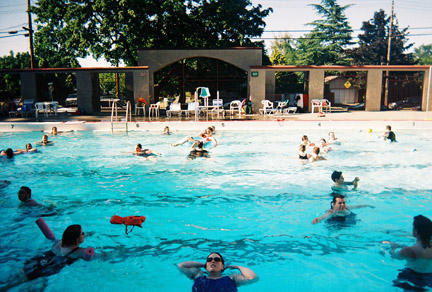Organizer Resources
Why is Intersectionality Important in a Chunky Dunk?
If you’re not sure what intersectionality is, here is an explanation from Kimberle Crenshaw, the originator of the term. And here is an animation that explains it as well. Creating an event like the Chunky Dunk is about making space for marginalised people to more safely inhabit their bodies in joyful ways. To do this well, fatness can’t be the only thing we make space for.
Did you know that swimming pools have traditionally been a deeply unsafe space for Black folks? Here is an article that talks about the racist history of swimming pools in America: Swimming While Black.
Swimming pools (and any place with communal changing areas and toilets) are also emotionally complex spaces for Trans/NB folks. Here’s an article that talks about why: What Swimming Pools are Like for Trans People
Also, even with the Americans with Disabilities act, many swimming pools are still behind on prioritising access for people who have mobility impairments or who use a wheelchair. And beyond the USA, disability access is even less likely and/or guaranteed.
Where fatness intersects any or multiple axis of marginalisation above, oppression amplifies. That’s why it’s our job as organisers to be sure that we’re doing all we can to make sure that EVERYONE feels as safe as possible getting to and into the pool. This should be our first priority as organisers.
ChunkyDunk PDX has openly struggled with disability access due to a lack of fully accessible and affordable outdoor pools – but organisers have worked diligently to hold Portland Parks and Recreation to account and, happily, the 2018 renovation of Peninsula Park Pool included many accessibility upgrades, including the installation of a new ADA lift!
Finding a Pool
Not sure where to find information about pool rentals? This site has a list of a great most pools in every country, state and city!
Alternately, simply google “pool rental [your city and state]” into Google and you’ll likely find all the information you need.
How much does it cost to organize a Chunky Dunk?
This varies wildly, but the minimum you should expect to spend is about $150 per hour of rental. It might well be double that in some areas.
You might consider asking the pool how many folks they see on average during the time you wish to rent the pool and if, instead of charging you for the rental, they will close their doors to the general public for those two hours with the understanding that you will be doing promotion which might bring in more folks than they’d normally have. This tactic will likely only work if you feel you can pack the joint. For fledgling events or smaller towns, pool rental is likely the best option.
Also be sure that you have a rain-out agreement with the pool. If it rains and they close the pool, they don’t charge you for the rental.
How much do I charge the attendees?
Take the amount of the pool rental and divide it by the minimum number of expected attendees. This is a guesstimate, but ballpark it on the low end and then charge the least amount you can to ensure that you break even. If you make more than you expect, you can roll it towards lowering the cost of the next event.
How do I promote my Chunky Dunk?
Ethically! That’s how. And intersectionally. And creatively.
To promote the event to your local community we recommend:
- Actively reaching into BIPOC, Trans/NB and Super Fat communities is imperative to creating an intersectional event.
- Check with local organisations, businesses, non-profits and community spaces that cater specifically to fat, queer, trans and BIPOC communities to invite participation and to ask them to help spread the word. You might even consider reaching out to local medical clinics and asking them to promote the event as a HAES (Health at Every Size) opportunity! Be creative and committed. Try everything!
- Social media – Instagram, Facebook, Whatever the kids are using these days. Reach out to local influencers and try to get them on board.
- Responsible flyering: (e.g. recycled paper and, where possible, biodegradable inks) – leaving flyers in public venues like restaurants, clubs and shops. (Be sure they are OK with it first!)
- Sending press releases to your local media. This includes mainstream and independent media, radio stations, alternative papers, local blogs, etc. Go to your most populace watering holes and see which publications still exist in print and contact them. Don’t be afraid to go after bigger media in your town. The worst they can do is ignore you, and you might be surprised what they deem press-worthy. Do not, however, invite coverage of the event itself. (See guideline #6 on the Be an Organizer page.)
- Public actions. Stand outside Jenny Craig in swimsuits and hand flyers to folks going in and out. Do a synchronized swimming fountain action and then hand flyers to people who gather. Put flyers in diet books in your local bookstores and libraries. Place them on top of the diet meals in the freezer section of your local grocery store. Be silly. Have fun!

Comments on this entry are closed.